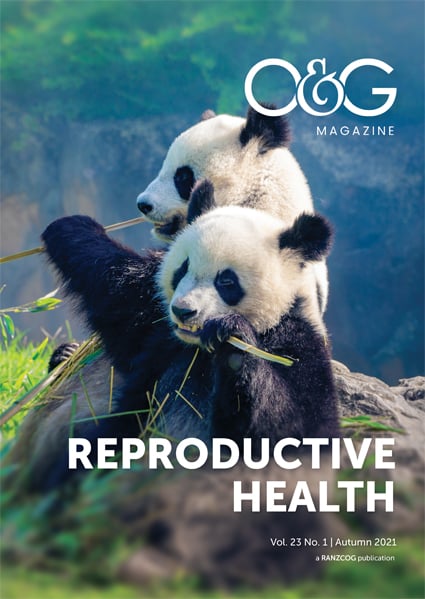Dr John Cunningham Anderson
1940–2020
‘Few if any graduates from the 1965 year have achieved such distinction or influence in the practice of their chosen specialty or have advanced the prestige and cachet of the Sydney University Medical School as John Cunningham Anderson (known as Jock to his friends, family and acquaintances)’ is a quote from his 50th year reunion book.
Jock was born at Kilmarnock near Glasgow in 1940 and migrated to Australia with his family in 1956. He came to medical school at the University of Sydney from Homebush Boys High School with a strong interest in engineering. On graduating in 1965, he did his junior medical training at Western Suburbs and Bankstown Hospitals and his senior specialty training in Obstetrics and Gynaecology at The Women’s Hospital Crown Street gaining his Membership of the Royal College of Obstetricians and Gynaecologists (MRCOG) in 1972, his Diploma of Diagnostic Ultrasound (DDU) in 1977, his RANZCOG Fellowship (FRANZCOG) in 1979, Fellowship of the Royal College of Obstetricians and Gynaecologists (FRCOG) in 1984 and Credentialing in Obstetrical and Gynaecological Ultrasound (COGU) in 1991. Jock also held a commission in the army reserve as a medical officer in the rank of captain from 1971 until 1978, during which time he made two tours of duty to Papua New Guinea involved in malaria research.
Jock returned to his native Glasgow in 1973 to pursue training in Obstetrical and Gynaecological Ultrasound from its founding father, Professor Ian Donald, and was one of the first to be qualified in this field. He returned to The Women’s Hospital Crown Street in 1974 as Deputy Medical Superintendent and was appointed Acting Medical Superintendent in 1976. During this period, he established an ultrasound department in the hospital. He developed an interest in the developing field of prenatal diagnosis and was involved in the first amniocentesis performed in Sydney and later pioneered fetoscopic blood sampling for the diagnosis of thalassaemia.
After the closure of Crown Street, he was appointed as a Visiting Medial Officer at King George V Hospital for Mothers and Babies/Royal Prince Alfred Hospital in 1982 where he helped set up the Fetal Medicine Department in 1987 and develop Chorionic Villus Sampling for first trimester diagnosis as well as the development of a multidisciplinary team for the monitoring and management of high-risk pregnancies. As well as continuing to practice as an obstetrician, Jock also established a specialised obstetrical and gynaecological ultrasound practice outside the hospital which was to become Sydney Ultrasound for Women, with sites throughout the metropolitan area.
Jock’s leisure time (what there was of it) was at this time taken up by his passion for aeronautics where he held a pilot’s licence and a Command Instrument Rating on multi-engined aircraft for many years. He also hand built two Rutan designed aeroplanes, from the drawings, which he did in the garage of his home. He started with a single engine model but later progressed to the twin-engined Defiant, which was a major engineering feat. As well as this, he enjoyed playing squash and tennis and was a keen and highly skilled angler.
With the development of In Vitro Fertilisation (IVF), Jock’s ultrasound and engineering expertise was sought by Prof Robert Jansen, with whom he later established Sydney IVF (Genea) in 1984, to develop the first transvaginal phased array ultrasound probe and needle guide in collaboration with engineers at General Electric. This was ground-breaking technology which enabled safe transvaginal ultrasound-guided outpatient ovum retrieval, no longer requiring general anaesthesia, a development which revolutionised the industry. He also transformed neonatal humidicribs into transport incubators, the prototypes of the equipment routinely used in IVF theatres and laboratories today as well as designing specialised embryo transfer catheters along with Prof Jansen.
Jock published widely and as well as writing multiple articles on ultrasound, prenatal diagnosis and IVF over the years, he also edited a comprehensive textbook on Gynaecologic Imaging for Churchill Livingston which was published in 1999 and remains a definitive work in the field. Teaching was another of Jock’s great passions with a multitude of local and international presentations to his name and involvement in training both medical students and trainee doctors throughout his career. In recognition of these efforts, RANZCOG appointed him as chairman of the Ultrasound Subspecialty Committee from 1994 until 1998 and after his retirement in 2008, awarded him its highest honour, the Distinguished Service Medal in 2012.
Jock is survived by his wife Janette and his six children as well as six grandchildren. He will be sadly missed by his family, friends and colleagues as well as the innumerable patients for whom his expertise and ingenuity has made a difference over the years.
Dr Tom Boogert





Leave a Reply